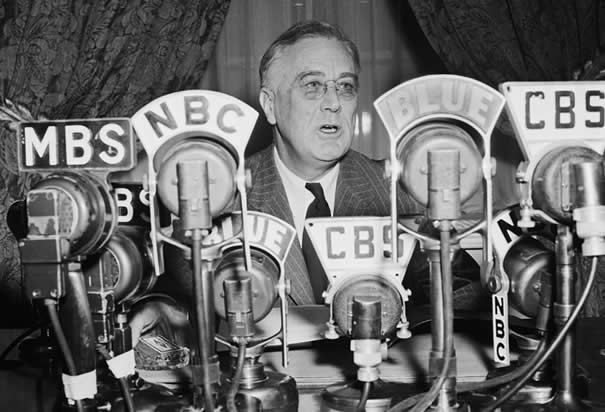On June 10, 1933, President Roosevelt signed Executive Order 6166 to consolidate all 64 existing federal parks, monuments and historical sites under the National Park Service (NPS) in the Department of Interior. This was the opening salvo in a vast program of parks expansion and improvement under the New Deal, 1933-42 [1].
National battlefields were previously run by the War Department, national monuments by the Forest Service of the Department of Agriculture, and federal buildings in Washington, DC by the Office of Public Buildings and Parks and two commissions that were abolished.
The reorganization was the brainchild of Horace Albright, outgoing head of the NPS. It dovetailed with President Roosevelt’s enthusiasm for parks and welcomed by new Secretary of the Interior, Harold Ickes, an energetic parks advocate and rival of Secretary of Agriculture, Henry Wallace, who favored continued natural resources extraction on all public lands [2].
Under the New Deal a host of new parks and monuments were created. Eight national park acts were approved by Congress and signed by the president: Everglades, Great Smokey, Shenandoah, Big Bend, Olympic, Kings Canyon, Isle Royale, Mammoth Cave. In addition, FDR set aside twenty-one new national monuments by Executive Order, some of which later became national parks, e.g., Capitol Reef and Joshua Tree [3].
To make old and new parks and monuments more accessible and usable by the American public, the Civilian Conservation Corps (CCC) set up camps across the country to work on improving national parks, monuments and battlefields for visitors by building roads, campgrounds, trails and more; that work continued throughout the New Deal [4]. Relief labor from other programs, especially the Works Progress Administration (WPA), was also frequently used in the parks under the oversight of the National Park Service.
The federal government helped dozens of states establish and expand their own parks systems. Some were granted federal land to create new parks, and the CCC and WPA worked extensively in state parks [5.] Finally, President Roosevelt approved around 250 additions and modifications to the US National Forest system [6].
Sources: (1) Larry Dilsaver, Ed. America’s National Park System: The Critical Documents. New York: Rowman and Littlefield, 1994; Donald Swain, “The National Park Service and the New Deal, 1933-1940.” Pacific Historical Review, 41/3: pp. 312-32. (2) Douglas Brinkley, Rightful Heritage: Franklin D. Roosevelt and the Land of America. New York: Harper Books, 2011, pp. 190-91. (3) For a full list, see Brinkley note 2, Appendix C. (4) Ren and Helen Davis, Our Mark on This Land: A Guide to the Legacy of the Civilian Conservation Corps in America’s Parks. Granville, OH: McDonald & Woodward Publishing, 2011; Paige, John, The Civilian Conservation Corps and the National Park Service, 1933-1942: An Administrative History. Washington, DC: National Park Service, 1985. (5) Brinkley, pp. 90-93, 112-116. For a case study, see Tara Mielnik, New Deal, New Landscape: The Civilian Conservation Corps and South Carolina’s State Parks. Columbia, SC: University of South Carolina Press, 2011. (6) Brinkley, Appendix D.
« Back to Glossary Index